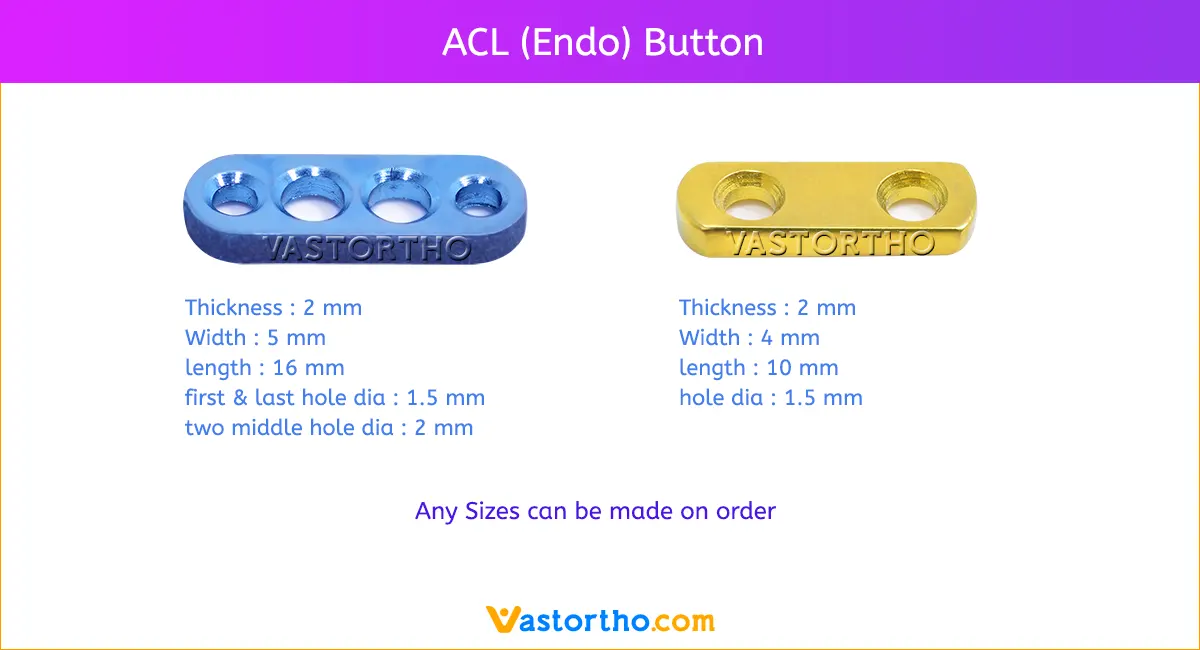Endo Button Advantages and Uses in Orthopedic Surgery
Orthopedic operations, particularly those involving ligament restoration, have made substantial progress in recent years. The Endo Button, a small yet strong implant that has revolutionised graft attachment techniques, is one such innovation. The Endo Button has unquestionably had a substantial impact in orthopedic surgery, notably in ligament repair techniques. This little device has improved surgical outcomes and patient experiences due to its strong fixation, stress distribution, and less invasive approach. As orthopaedic procedures advance, the Endo Button demonstrates the power of innovation in expanding medical treatments and improving patient quality of life.
The benefits of using the Endo Button in ACL reconstruction include:
Improved Fixation Strength:
The EndoButton has various advantages over conventional fastening techniques like screws or staples. It first offers a solid and reliable attachment, lowering the possibility of graft failure or slippage. Because of the way the device is made, there is more contact between the graft and the bone tunnel, which aids in stability and healing.
Stress Reduction and Better Healing:
The button-shaped design of the Endo Button also helps to better healing outcomes. It decreases stress concentration on the graft by dispersing pressures over a greater area. This distribution reduces the possibility of excessive stress on any particular portion of the graft, facilitating better healing and lowering the risk of re-injury.
Technique with Minimal Invasion:
Orthopedic operations frequently try to reduce tissue injury and encourage faster healing. The Endo Button contributes to these objectives by providing for a minimally invasive surgical procedure. Patients may suffer less discomfort, edoema, and scarring as a result of fewer incisions and less disruption to the surrounding tissues.
Widespread Use and Flexibility:
The Endo Button has come to be extensively accepted and used in orthopedic procedures. Its versatility extends beyond ACL restoration to include other ligament repair operations such as PCL reconstruction and multiligament knee surgeries. The versatility of the technology makes it a vital tool for orthopedic surgeons all over the world.
Patient Advantages and Better Outcomes:
Ultimately, the Endo Button’s advantages translate into better patient outcomes. The implant can help patients restore strength, movement, and function more effectively by increasing stability and supporting optimal healing. The lower risk of complications and re-injury may result in shorter recovery durations, allowing patients to resume their busy lifestyles sooner.



